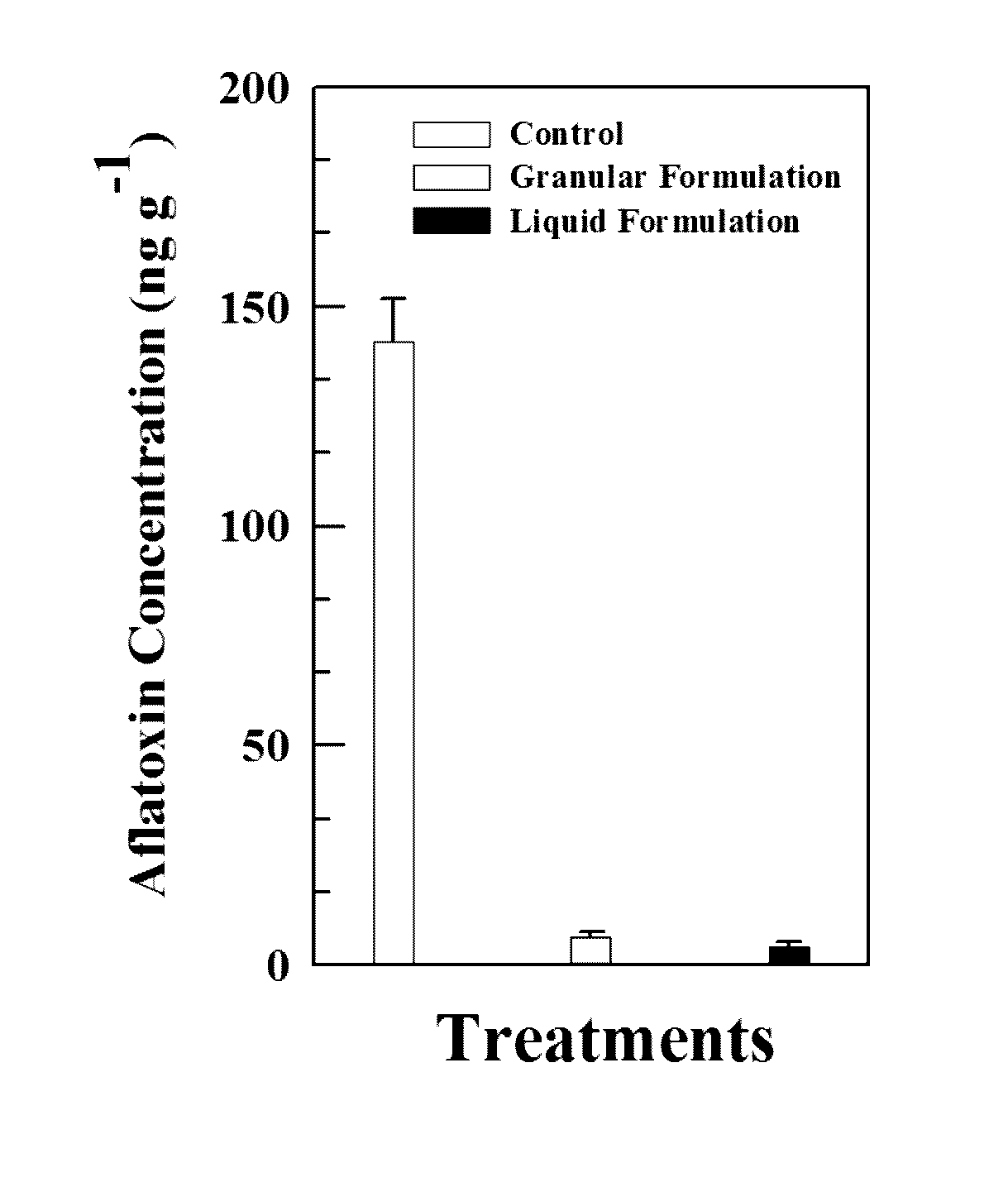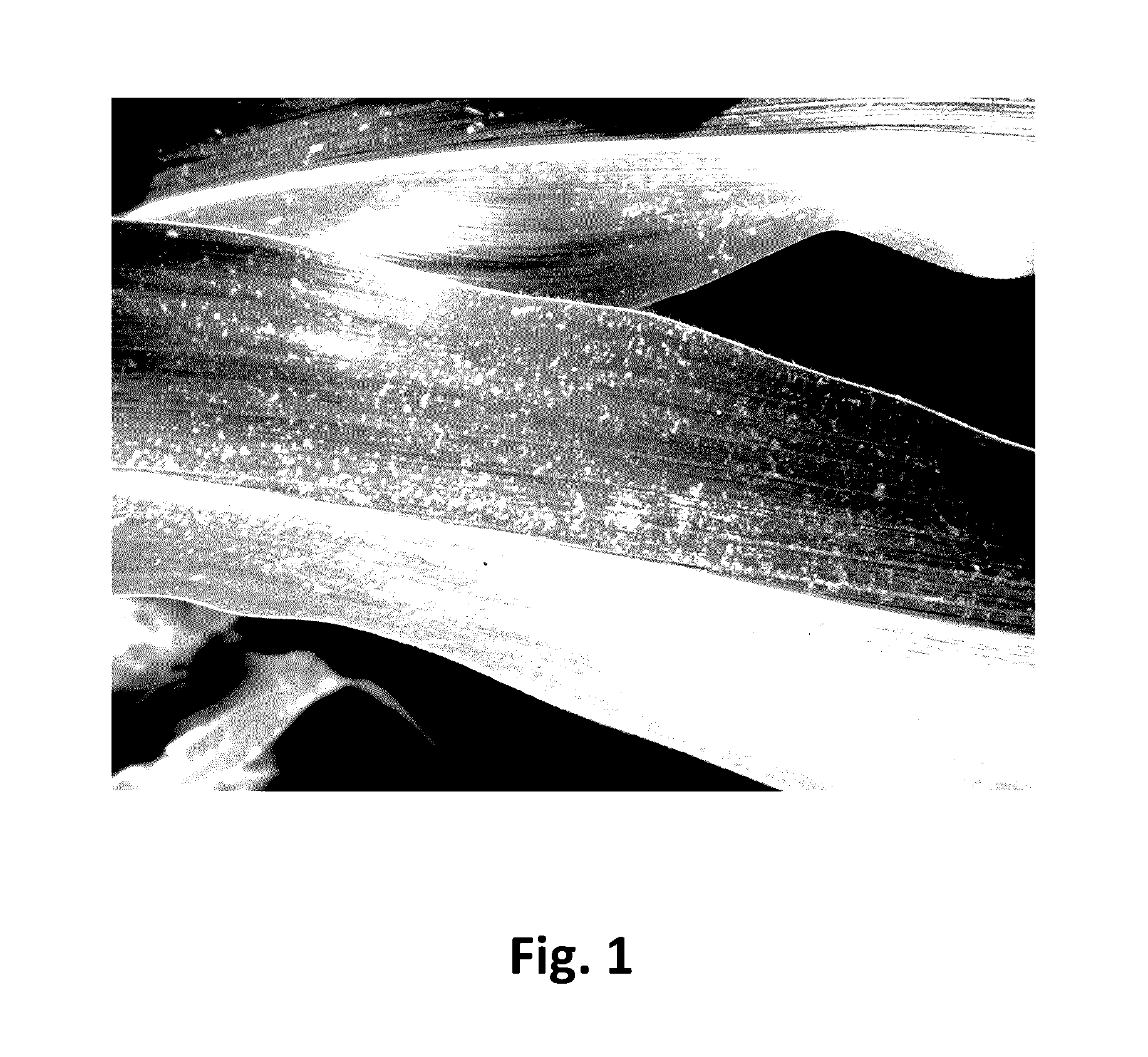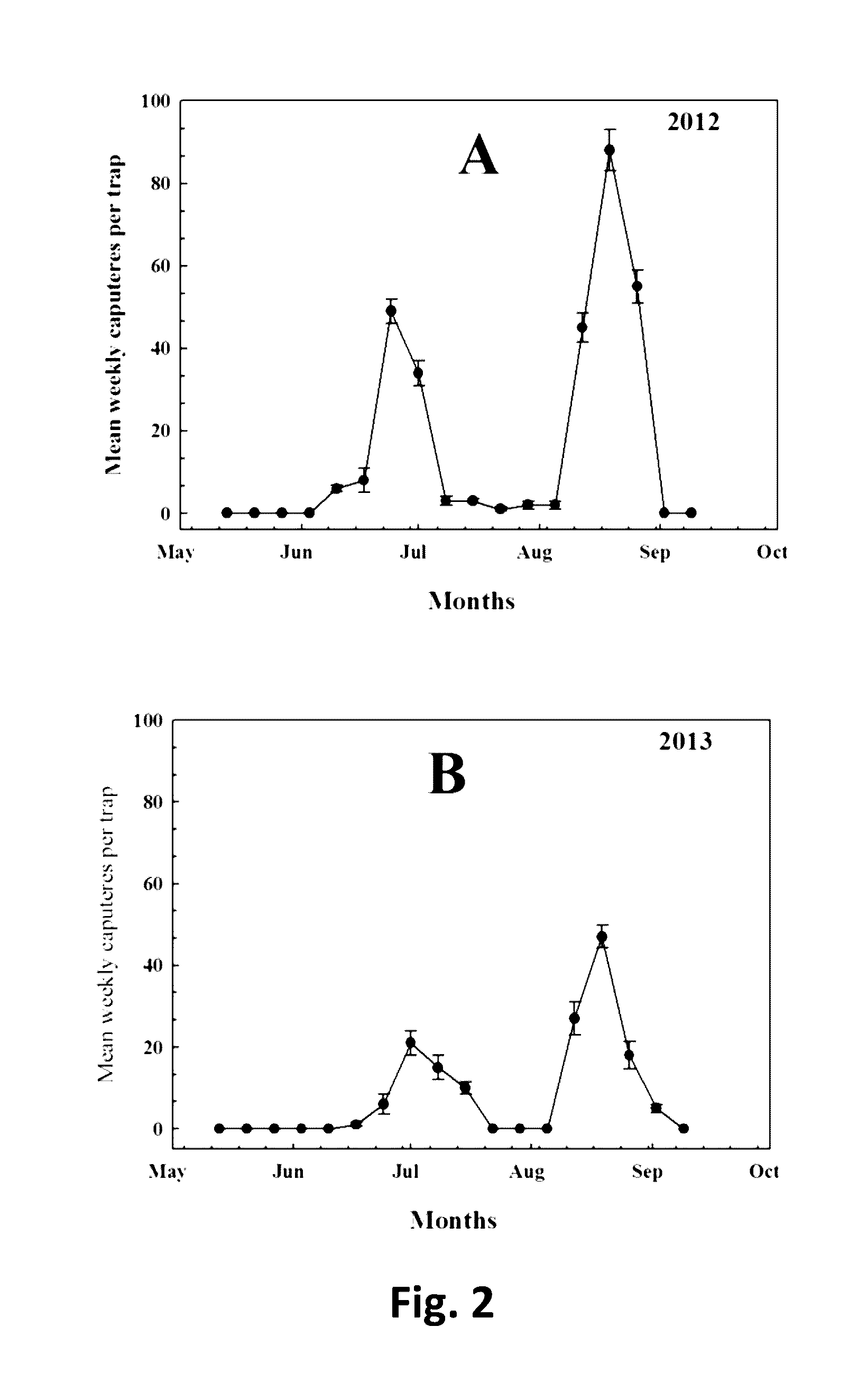Sprayable dispersed starch-based bioplastic formulation to control pests
a bioplastic formulation and dispersed starch technology, applied in biocide, animal husbandry, botany apparatus and processes, etc., can solve the problems of limited number of products entering the market, limited commercial success, and high production costs, so as to prevent or reduce the contamination of corn with aflatoxin, and suppress damping off disease
- Summary
- Abstract
- Description
- Claims
- Application Information
AI Technical Summary
Benefits of technology
Problems solved by technology
Method used
Image
Examples
example 1
Biocontrol Fungi, Bacterial, and Toxins
[0046]Laboratory and field studies were carried out with the following biocontrol microorganisms: Beauveria bassiana ATCC 74040, B. bassiana N18, B. bassiana GHA, Trichoderma harzianum ATCC 20847, Aspergillus flavus NRRL 30797 and insecticidal endotoxins produced by the bacteria Bacillus thuringiensis subsp., kurstaki HD1. Several microorganisms can be formulated with this sprayable bioplastic formulation, including Metarhizium brunneum (Erler et al. 2014. Pest Manag. Sci. 70:496-501), Bacillus thuringiensis subsp. tenebrionis (Elek et al. 1999. J. Econ. EntomoL 92:1062-1071), Bacillus subtilis (Hu et al. 2014. Biol Control 70:54-64), Trichoderma hamatum (Horst et al. 2005. Plant Disease 89:1195-1200), Phoma macrostoma (Bailey, K. L. 2010. Canadian J. Plant Pathol. 32:113-121) and Myrothecium verrucaria (Hoagland, et al. 2007. Biocontrol Sci. Technol. 17:721-731). A. flavus NRRL 30797 was deposited at the NRRL (National Center for Agricultural ...
example 2
Preparation of Sprayable Bioplastic-Based Formulations
[0047]The sprayable bioplastic formulation was prepared by homogenizing a mixture of bioplastic pellets, granules or powder in water (20%; w / v) in a Waring blender. After blending for 15 minutes, the bioplastic dispersion was passed through a 1-mm sieve, diluted (0.25-2.5% or other values) in water and stored at 4° C. until used. For specific requirements, such as addition of bioactive compounds or substances (i.e. endotoxins), the formulation can be sterilized by autoclaving for 15 min at 120° C. Alternatively, inoculation of the bioplastic powder can also be achieved by solid state fermentation processes where the bioplastic and, e.g., a fungal culture, are incubated together in a receptacle such as an autoclavable bag for 3-7 days, then dried in an oven at 45° C. The resulting dried material is ground into flour which is soluble in water and sprayable. The same result is obtained by passing bioplastic pellets or granules throu...
example 3
Application of Sprayable Bioplastic Formulation Under Controlled Greenhouse Conditions
[0049]The feasibility of this sprayable bioplastic formulation to serve as a practical and effective formulation for microbial biocontrol agents was first evaluated under controlled greenhouse conditions. Plants of corn, cotton and soybean were grown in a greenhouse and watered daily from the soil for the whole duration of the experiment. A liquid dispersed starch-based bioplastic formulation prepared with 1% bioplastic powder (7 spores / mL of T. harzianum ATCC 20847 or A. flavus NRRL 30797 was uniformly sprayed on the leaves, using a hand-sprayer. For each treatment, a total of 7 plants of each species were uniformly sprayed with 35 mL of formulation. Leaf samples were collected 1 hour before spraying and then 2 and 4 weeks after spraying, using a bleach-disinfected single hole punch. For each plant, a total of 5 samples were collected and transferred in sterile 2-mL tubes and directly used for DNA...
PUM
 Login to View More
Login to View More Abstract
Description
Claims
Application Information
 Login to View More
Login to View More - R&D
- Intellectual Property
- Life Sciences
- Materials
- Tech Scout
- Unparalleled Data Quality
- Higher Quality Content
- 60% Fewer Hallucinations
Browse by: Latest US Patents, China's latest patents, Technical Efficacy Thesaurus, Application Domain, Technology Topic, Popular Technical Reports.
© 2025 PatSnap. All rights reserved.Legal|Privacy policy|Modern Slavery Act Transparency Statement|Sitemap|About US| Contact US: help@patsnap.com



